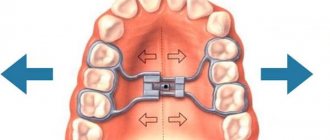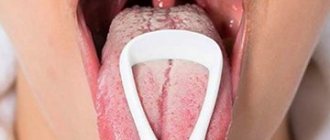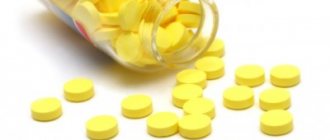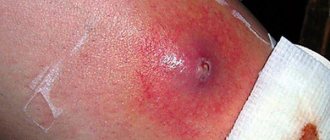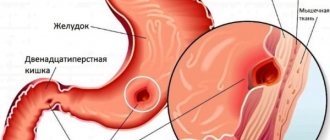- August 31, 2018
- Diseases and conditions
- Galina Chebykina
You can get hurt anywhere, children are especially “talented” at this! They run through the streets, they can fall, scratch their knee, step on a nail, prick their finger, and so on. The slightest particles of dirt, getting into a fresh wound, provoke the formation of an abscess. Treatment with folk remedies, as they say, is cheap and cheerful, so many people use alternative medicine. Ointments and compresses according to the recipes of our grandmothers are no worse than store-bought drugs, they are even more effective, and there are no side effects! In this article we will teach you how to treat abscesses using folk remedies. We have collected the most effective and proven recipes for you.
Baked onion
This is a powerful remedy for abscesses; it is praised in all reviews in various forums devoted to this topic. The most important thing is that there is nothing difficult to prepare and use, everyone can handle it!
- Peel one onion and place in the oven for 20 minutes at 180 degrees. To save time, you can use the microwave by placing the product in it for 2 minutes at full power.
- Wait until you can pick up the onion without burning your fingers. Divide into two parts or into several parts (depending on where you apply it).
- Apply the cut side of the baked onion to the wound or to the place where the abscess is brewing. The onion layer should be thicker so that its heat lasts longer.
- Secure the onion with a gauze bandage and leave overnight.
The next morning you will notice that there is no pus in the wound, onion helps one hundred percent against abscesses. If there was a brewing abscess, then the vegetable will draw out the pus and the wound will begin to heal! This is such a simple and cheap way to treat an abscess with a folk remedy!
The wound can be treated with streptocide by crushing the tablet. Streptocide ointment will also help the wound heal faster. You can prepare an ointment for abscesses yourself using traditional medicine recipes. How to do it?
Forecast of the course of the disease
If you seek help in a timely manner, 99% of patients recover after opening surgery, even with difficult localizations of abscesses: in the brain, reproductive organs, and liver. The course of the pathology can be complicated by the breakthrough of pus into the surrounding tissues, which will provoke a negative result - ulcerative phenomena or scarring.
In untreated forms of abscesses, advanced suppuration with non-compliance with doctor's instructions after surgical opening of the abscess, the risk of chronicity and periodic relapses increases, which requires repeated surgery.
The article has been reviewed by the site editors
Homemade propolis ointment
We will make an ointment for abscesses, and a proven remedy for hundreds of diseases - propolis - will help us with this.
Propolis tincture can be bought at a pharmacy, or you can prepare it with the right ingredients and time: pour 10 grams of propolis in half a glass of alcohol, leave in the dark for 10 days.
Ointment recipe:
- Mix a tablespoon of any natural honey, butter and propolis tincture.
- Place the mixture in a water bath and simmer until a homogeneous substance is obtained.
- Cool, place in a container convenient for storage and use.
Use ointment to draw out pus from a neglected wound. You need to apply the product to the affected area or to a bandage, be sure to apply a gauze bandage so that the ointment does not smear and no more dirt gets in.
Of course, we must not forget that before applying the ointment and bandage, the wound should be washed with soap.
Stages of ulcer maturation
The formation of an abscess occurs as follows:
- Due to skin damage, a staphylococcal infection enters the body.
- A capsule appears at the affected area, which prevents damage to other tissues. Redness and hardening appear at the site of infection.
- There is purulent discharge in the capsule.
- After 7 days, the purulent masses come out, after which the wound healing process and restoration of skin tissue occurs.
If the suppuration is deep, then it has the ability to penetrate deep into the skin. All this can lead to sepsis, the treatment of which can be lengthy and not always effective.
In medicine, a rule is often followed: if pus is seen, it is immediately eliminated. The abscesses are opened under general or local anesthesia. Next, the wound is cleaned and drainage is installed to drain the pus. At the end of this procedure, a gauze bandage is applied, which will have to be changed more than once.
When all the pus has come out of the wound, the drainage can be removed. In parallel, the doctor prescribes medications that help the wound heal quickly. But minor suppuration can be easily eliminated at home.
Aloe
And again, a multimillion-tested remedy - aloe for abscesses. This plant relieves inflammation, draws out pus, and heals the wound faster than any, even the most expensive store-bought remedy!
If you have a boil or other kind of unopened abscess, then you need to do this:
- Wash the aloe leaf, cut it into two parts lengthwise so that there is a large area of the active substance - pulp with juice.
- Place the cut side of the leaf on the wound or boil, secure tightly with a bandage, and leave for 12 hours.
As the plant works, you will feel the leaf drawing out pus! The feeling is unpleasant, but you need to endure it, because when the bandage is removed, there will be no pus in the wound. In the case of a boil, you need to apply aloe steadily until the wound begins to heal!
If the wound just begins to fester (an abrasion, the site of a torn off burr, and so on), then you don’t need to apply the sheet. Just squeeze the juice from an aloe leaf directly onto the wound and cover with a bandage.
Ficus from rotting
If aloe is not available, but there is ficus, then you can use it, this plant acts like an ointment for drawing out pus! Ficus is not as effective as aloe, but still very good. Plant uses vary.
- Tear off two young leaves from the ficus. One will need to be boiled for 2 minutes, and the other will need to be processed in a meat grinder until a paste is obtained.
- Without cooling the first leaf, you need to make a compress: put the paste on the hot leaf, apply it to the abscess or boil, and tie it tightly with a bandage.
- You need to keep the compress for at least 10 hours.
- If the product does not help as needed the first time, repeat the procedure.
Remedy for boils when there are no house plants
You won’t find better than aloe and ficus, but nowadays it’s difficult to find such plants in the house; everyone is more interested in beautiful flowering indoor plants or is satisfied with their complete absence. If a terrifying boil, also called a boil, appears, a cabbage leaf compress will help:
- Take the leaf of white cabbage that is closer to the center, it is softer and juicier, which means it is healthier.
- Remove all the tough veins from the leaf, then wrap it in film and give it a good pounding with a rolling pin to release the juice!
- Lubricate the juiciest side of the leaf with honey and apply the same side to the boil.
- Fix the cabbage leaf compress well with gauze or bandage and keep it for 3 hours.
If the remedy doesn’t help the first time, then use it until you win, until the pus comes out of the boil!
Potato
Oh, and potatoes! The tubers are eaten cooked in various ways, and are inhaled over boiled potatoes to relieve coughs, and are used as a folk remedy to treat boils. Multifunctional product! So, if you are worried about a boil or a wound that is festering, then prepare the simplest remedy for such ailments:
- Wash the potatoes, peel them, wash them again.
- Grate the tuber on a fine grater, let the starch settle, remove it and the juice so that the phlegm does not cause discomfort.
- Place the potato pulp on the abscess, wrap it with cling film (since the potatoes will still ooze, stain the bed and get in the way), and cover with several layers of gauze on top.
- The product is kept on the abscess for 12 hours, then removed.
In one application, potatoes will draw out pus even from an unopened abscess, not to mention the fact that pus from an ordinary wound will completely disappear without a trace!
Ointments for drawing pus from closed wounds
Purulent wounds, regardless of location, are accompanied by a number of pronounced clinical signs. If the patient experiences pain upon palpation of the wound, local hyperthermia is detected, and the color of the skin changes, then this indicates the accumulation of purulent masses under the skin. It is necessary to use a specialized drug that “sucks” the pus out.
It is worth knowing: when suppuration occurs, treatment is required with topical drugs that draw pus from the wound. If the patient exhibits symptoms of general intoxication - fever, headache, drowsiness/insomnia, lethargy, fatigue, then this indicates a serious course of the disease. External means alone are not enough; it is necessary to use tablets internally.
What ointment draws out pus? The modern pharmaceutical industry offers a large selection of medications - expensive and cheap, which have anti-inflammatory and antibacterial effects and promote the outflow of purulent secretions. The most effective drugs include Vishnevsky ointment, Levomekol, Ichthyol ointment, Sintomycin. Let's look at the listed medications in more detail.
Vishnevsky ointment
Balsamic liniment contains three active ingredients that enhance the healing effects of each other. Ointment for drawing out pus has anti-inflammatory, bactericidal, immunomodulatory effects. An antipurulent drug is used for festering pimples, pustules, boils, abscesses, etc.
Vishnevsky ointment is characterized by a rather weak antiseptic effect, but it promotes rapid tissue regeneration, accelerates the absorption of subcutaneous pus, as a result of which wound healing occurs faster.
Instructions for use:
- To treat a purulent wound, it is necessary to apply a medicinal substance to the affected area and apply a bandage on top. Frequency of application – twice a day;
- To cure a subcutaneous pimple, apply the medicine to the problem area and attach an adhesive plaster on top.
Important: Vishnevsky ointment should not be used if there is individual sensitivity; it should not be applied to large areas of the skin, cysts with pus, or wen. During pregnancy and lactation, the drug is used with extreme caution.
Levomekol
An ointment that draws pus from a closed wound. Dioxomethyltetrahydropyrimidine is the active ingredient of the drug. The product draws out accumulated pus under the skin and helps heal various injuries. Used to treat trophic ulcers and skin lesions with accumulation of purulent secretions.
Antibacterial ointment has found wide use in gynecological, urological, and dental practice. If pus discharge is detected, then Levomekol ointment is the best remedy. The method of application is simple: first apply the drug to a clean bandage folded in several layers, then apply it to the affected area.
Composition and instructions for use of Sebozol shampoo
The bandage can be worn for 7-8 hours. Then you need to make a new one. If ointment is used to treat an abscess, then a small amount of medicine is applied to it - there is no need to rub it in, it is secured on top with an adhesive plaster. The duration of therapy is until the wound is cleared of pus and begins to heal.
Contraindications for use:
- Hypersensitivity to the active component.
- History of eczema/psoriasis.
- Fungal infections of the skin.
It can be used during pregnancy only on the recommendation of a doctor, since Levomekol is an antibiotic. If the composition is intolerant, side effects develop, mainly of a local nature - burning and itching at the site of application, hyperemia, swelling of the skin.
Ichthyol ointment
Ointment for abscesses and inflammation is a natural antiseptic that effectively cleans the damaged surface. Ichthyol ointment can be used for any wounds and inflammatory processes. It stops inflammation, softens the upper layer of the epidermis, as a result of which the accumulated pus comes out.
Ointment for purulent wounds should be used as follows:
- Apply a thick layer of medicine to the affected area. No need to rub;
- Cover the top with a sterile cloth. bandage;
- Leave the bandage on for 5-6 hours.
To treat single purulent pimples, the ointment is used as follows: the drug is applied pointwise to the required areas. Leave on the skin for 5-6 hours. After washing off, repeat the procedure. When the pimple breaks out, the medicine is used for a few more days.
Tetracycline ointment
Tetracycline ointment is the best “savior” for purulent lesions. The composition contains an active component - tetracycline. The drug has a pronounced antibacterial effect against many gram-positive/gram-negative pathogenic microorganisms.
Note: Tetracycline ointment cannot be used against the background of impaired liver function, fungal infection, or leukopenia. It is not recommended to treat children under 8 years of age; use in the third trimester of pregnancy is prohibited.
When asked how to draw out pus from under the skin, many medical experts recommend Tetracycline ointment. This remedy has proven itself well because it acts quite quickly. You can cope with a purulent lesion in 2-4 days.
The drug is used up to two times a day. The product is applied under the bandage. If long-term use is necessary - more than five days, you need to consult your doctor.
Instructions for the use of Taktivin injections and analogues
Tetracycline ointment can lead to the development of negative phenomena:
- Itching, burning, hyperemia of the skin.
- Decreased appetite.
- Disorders of the digestive tract.
- Attacks of nausea and vomiting.
- Angioedema.
- Pain in the epigastric region.
- Hemolytic form of anemia.
- Loose stools.
Tetracycline ointment belongs to the pharmacological group of antibacterial drugs, so it is not recommended to use it alone.
Which Kalanchoe helps with boils?
Kalanchoe has been used for abscesses for a long time. There are two types of plants - ordinary and decorative; both types can be used in the treatment of abscesses. As for application, there are two options:
- Rinse the Kalanchoe leaf with warm water and remove the film from one part of it. Apply the sheet to the abscess with this side, keep it under the bandage for 12 hours, then replace both the sheet and the bandage. Continue applying leaves until the abscess opens. But then you will need to make compresses again, only the film should no longer be removed from the sheet. Bandages with the plant should be applied until the wound begins to tighten.
- Second method: scroll the washed Kalanchoe leaves through a meat grinder, squeeze out the juice. Moisten a cotton pad, apply it to the abscess, and secure with a bandage. Apply bandages twice a day until the wound begins to heal.
Therapy
The choice of treatment method depends on the type of abscess and the stage of the inflammatory process. At the initial stage, therapeutic methods are used: applying warming and absorbable alcohol compresses. They promote rapid maturation and release of purulent contents. External exposure at the initial stage prevents the spread of the inflammatory process into the deeper layers of the skin and nearby tissues. Treatment of the problem area with alcohol, iodine, injection (blockade) with an antibiotic solution with an anesthetic, and UHF therapy are indicated.
The advanced purulent-necrotic stage requires surgical intervention for excision and drainage of the cavity, followed by surgical treatment.
Opening of a boil is carried out on an outpatient basis, hidradenitis and carbuncle - in a hospital under local anesthesia.
Plantain
Surely everyone in childhood, when they fell and broke their knees, applied plantain to them, after licking them first! For abscesses, plantain is applied differently, but on the forums it is recommended to chew it, rather than mince it, they say it’s even more effective. Of course, if your gums or teeth hurt, then the chewed remedy will not bring any benefit to the wound; on the contrary, it may worsen the situation.
- Take a few plantain leaves and wash them well.
- Chew or still scroll.
- Apply the paste to the abscess or festering wound. Do not cover with gauze!
- When the paste dries, remove it.
- You need to apply plantain in this form three times a day.
This plant is a good antiseptic, but still, for abscesses, those prescribed above will be more effective.
We invite you to see what other folk remedies have proven themselves in the fight against abscesses.
Features of wound drainage
The tube is inserted into the cavity to the depth of the abscess, sutured if necessary, manipulation is carried out in order to cleanse the abscess after opening. There is a free evacuation of residual necrotic particles and purulent fluid.
Need advice from an experienced doctor?
Get a doctor's consultation online. Ask your question right now.
Ask a free question
Types of drainage:
- The passive method is to insert a PVC tube into the capsule, which facilitates the outflow of the contents.
- An active method of drainage for an abscess is suction of purulent masses using medical aspirators, syringes, creating a vacuum with double tubes after opening. The advantage of the procedure is the possibility of washing the cavity with antiseptics with parallel evacuation of necrotic particles. With frequent manipulations, the cellular structures responsible for healing the postoperative wound are eliminated, which aggravates the patient's condition.
The required type of drainage is determined by the surgeon.
Garlic tincture
An excellent remedy for many ailments! The tincture should be inhaled when the first signs of ARVI, flu or just a cold appear. It also helps to quickly get rid of pimples without leaving any scars. Garlic tincture helps relieve itching from insect bites, and also dries out abscesses quickly and efficiently. How to prepare a miracle remedy that everyone should have at home at all times? Keep the recipe:
- Take a small bottle, a glass bottle for ointments or tablets or cream will do. Just rinse well with laundry soap so that no unnecessary components remain.
- Chop the garlic, peel it, and fill the container 2/3 with it.
- The rest of the bottle space must be filled with vodka or alcohol.
- The product is infused in the refrigerator for 2 days, after which it can be used for its intended purpose.
Traditional medicine recipes
Traditional medicine has proven itself well in the treatment of ulcers. There are a huge number of useful recipes that help quickly break through and heal affected areas of the skin. Using this technique, you can reduce pain and speed up the process of skin regeneration.
- Rye bread has been used for a long time to treat ulcers. To do this, you need to grind fresh rye flour bread in your mouth along with salt. The resulting pulp should be applied to the inflamed area and tied with a bandage so that it does not fall off. Using this recipe, you can speed up the process of breaking out the abscess and its healing.
- Honey has many beneficial properties. Its benefit lies in wound healing. To make the abscess resolve faster, you need to make a cake from equal amounts of flour and honey. This remedy effectively helps in the first and second stages of furunculosis.
- Although they say that an abscess cannot be heated, there is a recipe that refutes these rumors. Onions are baked in the oven and then applied to the inflamed area. The bulb needs to be changed every 4 hours. If you use this recipe, the abscess can quickly resolve.
- Ash mustache in a pot has many beneficial properties. It heals purulent wounds well. First you should select a thick rod and peel it. Next, the golden mustache is cut lengthwise, heated and applied to the inflamed area. You can also mix the pulp of this plant with honey and apply it to the inflammation overnight. In the morning, the bandage should be changed, and the affected area should be treated with any ointment to prevent the formation of purulent discharge.
- Laundry soap also helps eliminate inflammation perfectly. It needs to be grated and mixed with 300 ml of water. After this, you need to cook it until all the liquid has evaporated. The finished pulp is cooled, placed on a bandage and applied to the affected area.
- Compresses are made from willow decoction. The recipe consists of 20 grams of crushed willow bark, which is mixed with a glass of boiling water. After this, you need to heat everything in a container over low heat for 30 minutes. The prepared pulp should be applied to the inflamed area with a gauze bandage for a short time.
- Plantain can be used to stop bleeding from an abscess and for long-term non-healing wounds. This ingredient can be used as infusions and decoctions. In practice, a paste of plantain leaves is often used. It is applied to the inflamed area so that the wound heals.
Patients should treat the abscess comprehensively, because against the background of reduced immunity, chronic furunculosis often develops, which after treatment leaves large scars on the skin. The protective function of the body is supported with the help of vitamins, immunomodulators and a healthy lifestyle. Patients are required to adhere to hygiene rules. Those women who often have inflammation of the hair follicles are required to refuse depilation. After all, this procedure leads to ingrown hairs.
Ointment with wormwood
Another very effective remedy for treating abscesses. It is especially good to use this ointment if an abscess has formed on your finger. Why? We always need our hands, and we constantly wet them; bandages will only get in the way. This ointment does not need to be fixed or held. After application, you need to leave the product on for only five minutes, after which you need to remove the residue using a cotton pad or water.
The product has no downsides; it helps very quickly. Everyone who has tried this ointment notes that when applied, the wound begins to hurt and pulsate - this is a good sign, the ointment works, draws out pus and kills germs! Soon the wound will begin to heal, and the infection will no longer be a problem.
Recipe:
- Take a glass of thick, heavy cream, ideally homemade.
- A tablespoon of wormwood herb should be crushed and placed in cream.
- Place the product on the fire, and after boiling, cook for two minutes.
- Cool, strain, let cool.
- Pour the ointment into a container convenient for you and store in the refrigerator.
How to use soap?
Many people know that you can use laundry soap for abscesses, but not every one of them can tell you how to use this product correctly. It is not enough to simply wash the abscess by lathering it with a fragrant product! There are two most effective ways to use laundry soap in the presence of abscesses in wounds and boils:
- Wet a cotton pad, then lather it well with laundry soap. Apply the disc to the area that hurts and make a bandage. You need to keep the product all night, 8-12 hours, then remove. As they write in the reviews, the pain from the abscess stops within a couple of hours after applying the soap, and when you remove the bandage, you can see that the pus is draining.
- In half a glass of milk you need to put a tablespoon of grated laundry soap. Bring to a boil, stirring, and cook until the product resembles jelly. Or simply dilute enough soap in warm water to form a thick mixture (at first glance it seems easier with water, but this is far from true). Any of the mixtures should be placed on gauze and applied to the site of the abscess. Next, a tight bandage is applied.
- The bandage and soap need to be changed every 10 hours until the pus completely recedes before treatment.
Opening an abscess
Some patients ask: “How to open an abscess correctly?” Opening an abscess at home is prohibited. This event can cause serious complications.
An autopsy can cause the following complications:
- Skin furunculosis.
- Secondary abscess formation.
- Introduction of a second pathogen into the infection zone.
- Thrombosis of the cavernous sinus when the abscess is localized on the face.
- Sepsis is the entry of a pathogen into the blood.
Since autopsy cannot be performed at home, you should seek surgical help from a specialist.
Small abscesses can be treated conservatively. To “break through” the abscess, use one of the following drugs:
- Ichthyol ointment.
- Levomekol.
- Vishnevsky ointment.
- Baneocin.
What to do if you don’t have funds at hand? Some adherents of traditional methods of therapy recommend numerous recipes for alternative medicine.
Ichthyol ointment
The abscess matures faster when using the popular ichthyol ointment. This drug contains the substance ichthammol. The product has a number of positive effects:
- Kills bacteria in the area of inflammation.
- Causes irritation of nerve receptors, which reduces their sensitivity and reduces pain.
- Causes protein denaturation, which contributes to the accumulation of purulent masses.
- It is very well absorbed by the skin and mucous membranes, which allows the drug to penetrate into closed ulcers.
How to remove an abscess using ichthyol ointment? It must be applied externally 2 times a day. The effect is enhanced when applied under a sterile bandage.
A contraindication for use is an allergy to the active substance; in other cases, you can safely apply the medicine topically to the skin.
Levomekol
If the abscess does not break out on its own, you can use Levomekol ointment. This drug contains the antibiotic chloramphenicol and the antimicrobial agent methyluracil.
Due to the combined action of two strong agents, a rapid therapeutic effect is achieved:
Small boils do not need to be opened by a doctor if you have this antibacterial ointment on hand.
Levomekol draws out pus well if you use it as follows:
- Apply a small strip of ointment to a sterile bandage folded several times.
- Apply it to the area of inflammation.
- A small aseptic bandage is applied on top.
- Dressing is done daily.
- The traction bandage should not become wet or dirty.
If you have a large abscess, you should consult a doctor.
Vishnevsky ointment
One of the best remedies that helps break out an abscess is Vishnevsky ointment. This substance with a characteristic odor contains birch tar, castor oil and xeroform. The drug occupies an intermediate position between a medicine and a folk remedy. The ointment was developed by a doctor and has been used in medicine for a long time.
The main property due to which the drug is used for abscesses is the ability of the ointment to accumulate pus. The medicine acts not only on microbes and kills them, but also on skin proteins. Under the influence of the drug, the abscess quickly opens and pus comes out of the skin.
Use the remedy for suppuration as follows:
- The ointment is applied to a gauze square and applied to the site of inflammation.
- An aseptic bandage is applied on top.
- The bandage should be changed 2 times a day.
- Remove the dressing if dirt accumulates on it or if it gets wet.
- Do not apply a large amount of product, which will saturate the bandage through.
- If you do not change the bandage for a long time, the ointment will dry out and a crust will form on top of the inflammation.
- This bandage can be removed only after wetting the crust with a chlorhexidine solution.
If you have several boils on the skin, you should contact a qualified specialist.
Baneocin
Abscesses also open well when treated with the popular antibacterial ointment - Baneocin. The drug consists of two antibiotics: bacitracin and neomycin. These substances work well with boils both in the ripening stage and if they burst on the surface of the skin.
The product is used as follows:
- Apply to the affected area of skin 4 times a day.
- Can be applied under a bandage to prolong the effect of the product.
- The product does not need to be washed off with water; you must wait until the drug is absorbed.
Soda
Soda for abscesses is useful when preparing baths. Baths can only be used for hands or feet. Such procedures are extremely helpful in getting rid of an abscess on the finger, which is inconvenient to hold compresses and bandages on! One procedure will not be enough; it will take at least two days, and the procedure must be performed three times every day. There are several simple and effective recipes:
- Dissolve two tablespoons of baking soda in a glass of hot water. When the temperature of the liquid becomes such that you can hold your hand in it for at least a couple of seconds, you can begin. Dip your finger into the mixture for a few seconds and remove. Repeat this several times.
- Cool boiled water to 80 degrees. Chop the head of garlic and add to the liquid, add three drops of sea buckthorn oil and add two tablespoons of soda. When the water reaches approximately 70-60 degrees, perform the procedure in the same way as described in the previous recipe.
Soap and wax ointment
This ointment helps with mastitis, boils and simple abscesses. A very cheap but effective product that is appreciated and recommended by many people. To prepare the ointment, you will need:
- Grate 150 grams of laundry soap, mix it with 20 grams of natural beeswax, a tablespoon of honey, and the same amount of sunflower oil. Add 50 grams of rye flour, mix everything well.
- Wax may not dissolve well, and in order not to waste time and energy, warm up the composition a little.
- Apply the ointment as you would normally, no need to bandage or rinse off.
- If the ointment is washed off, you need to apply it again to dry skin.


